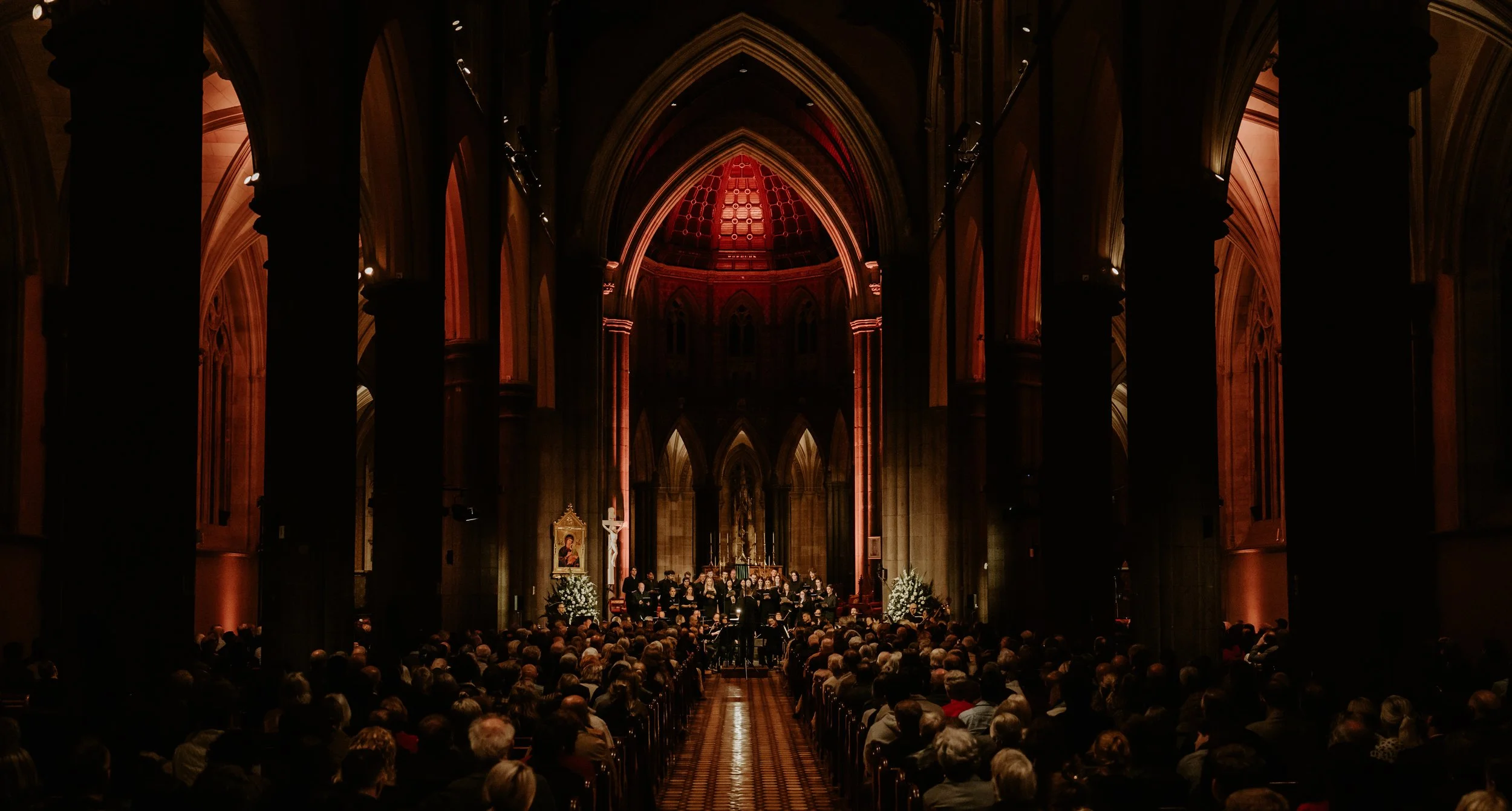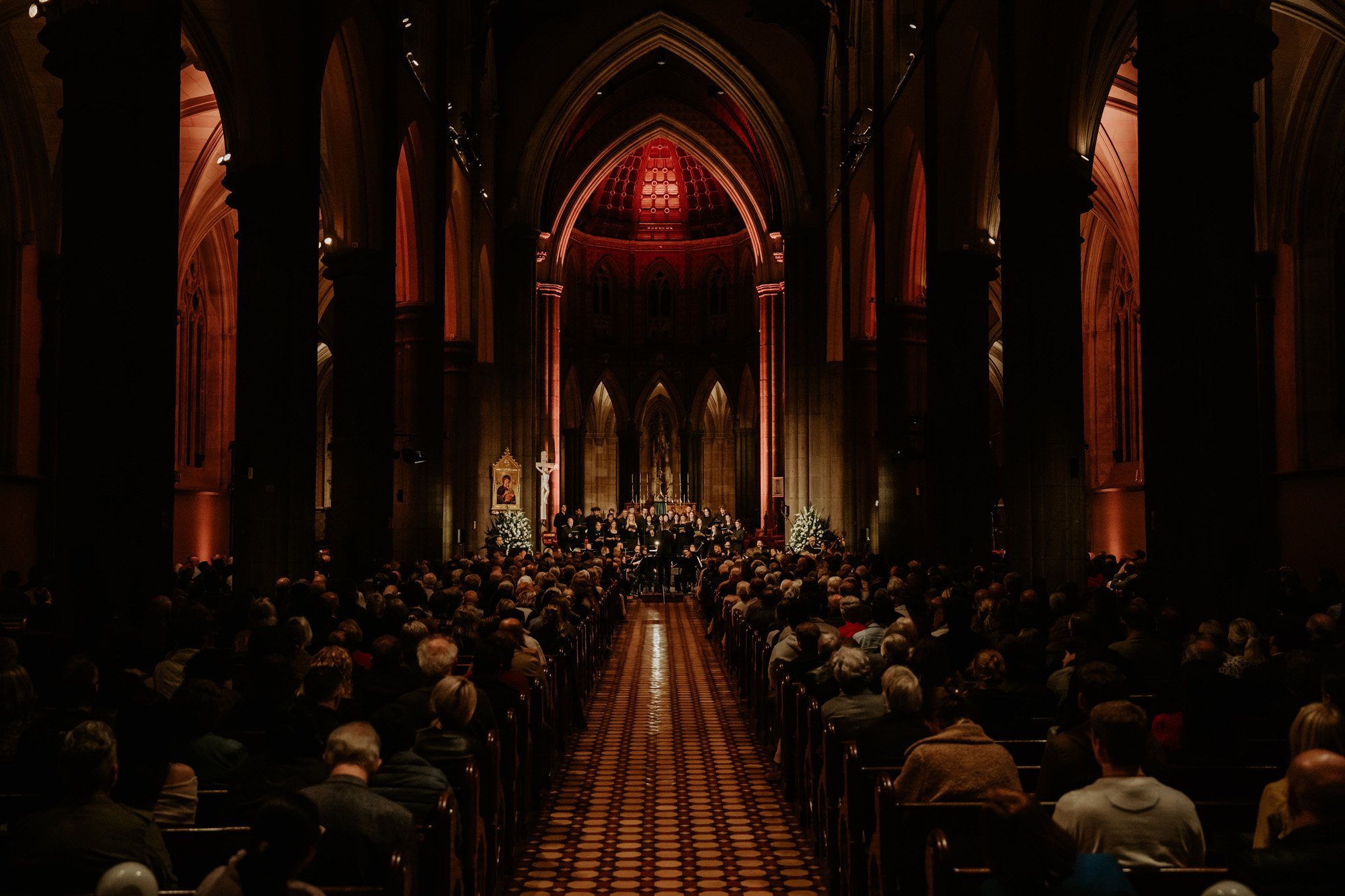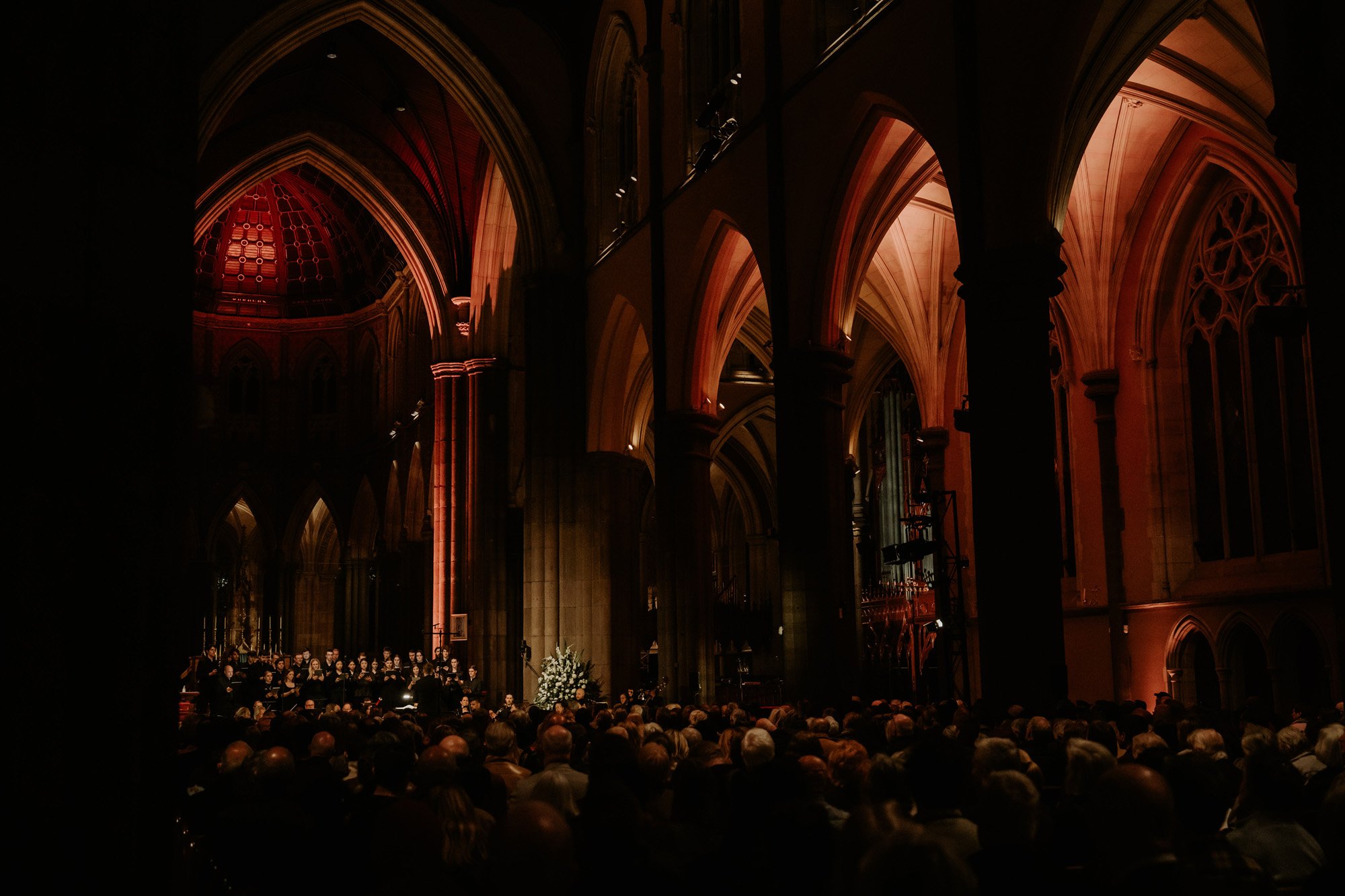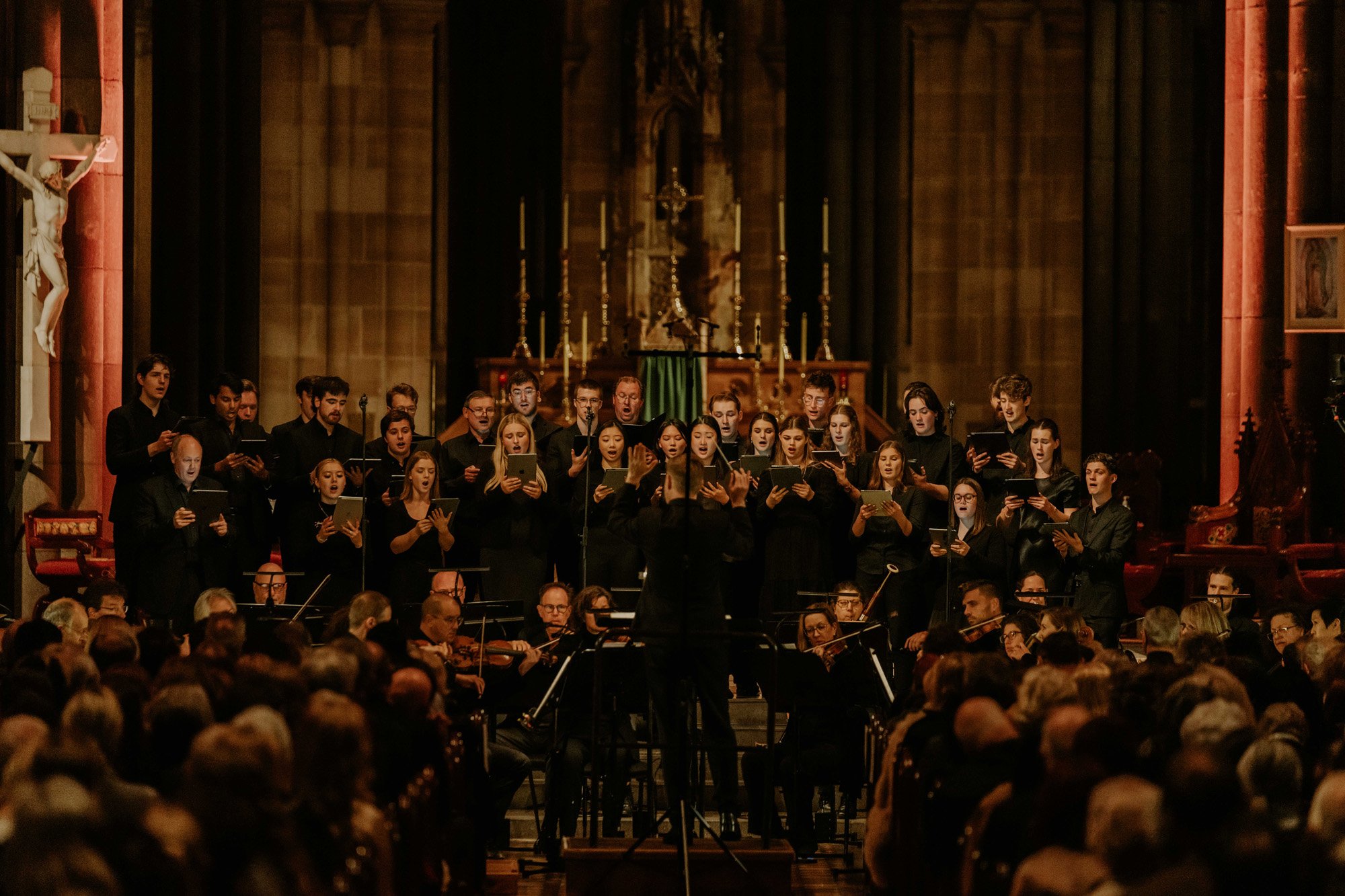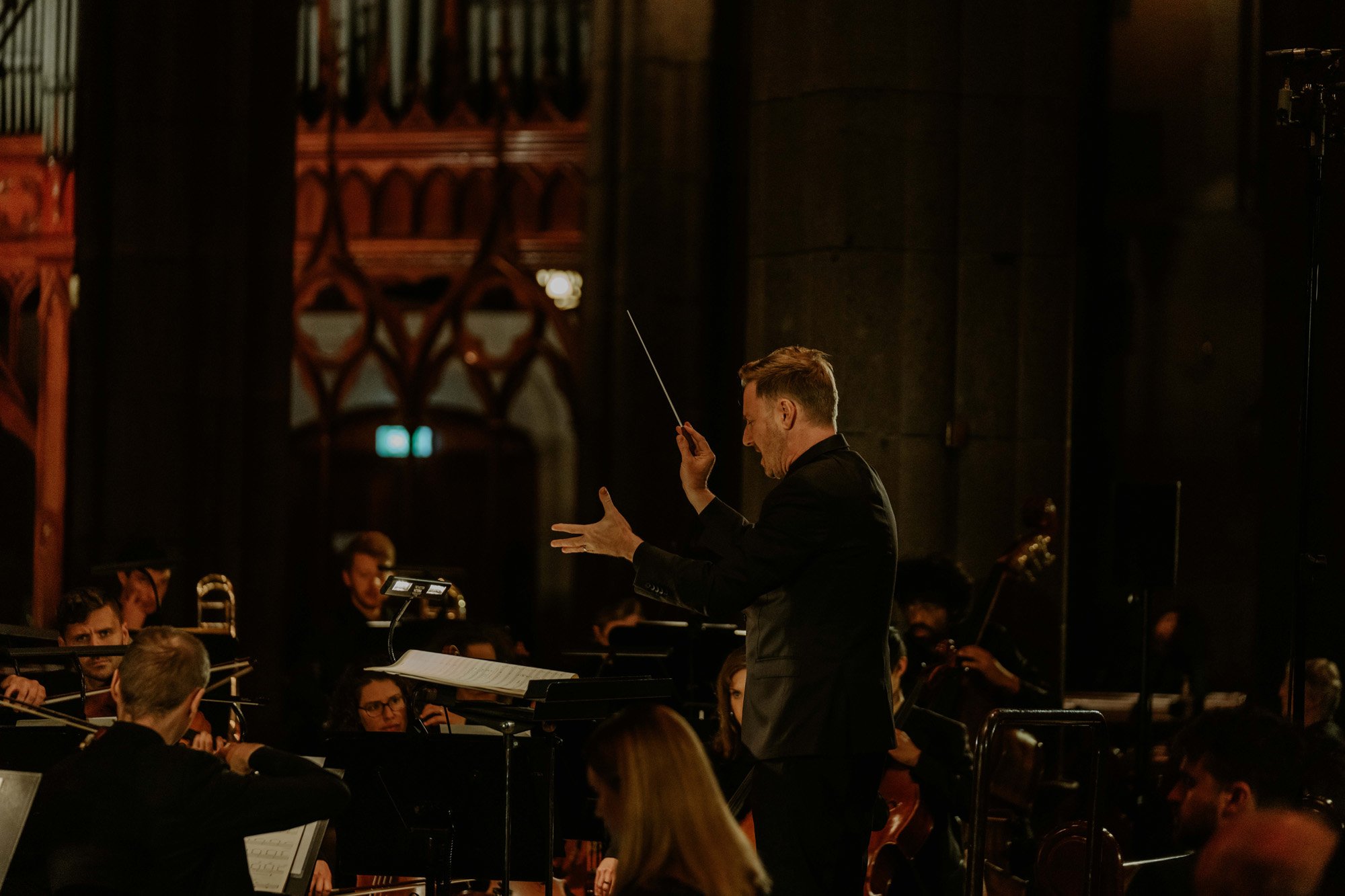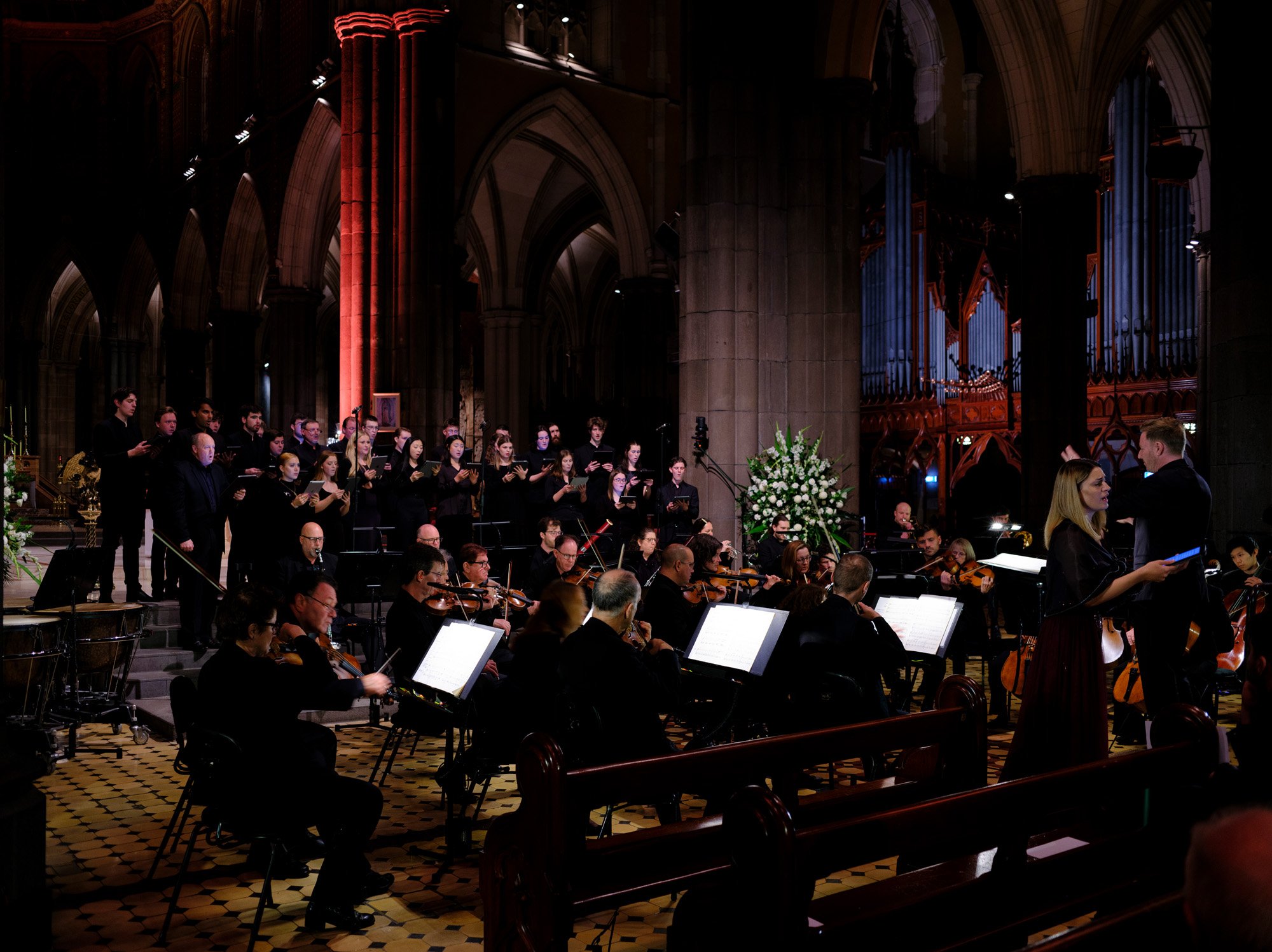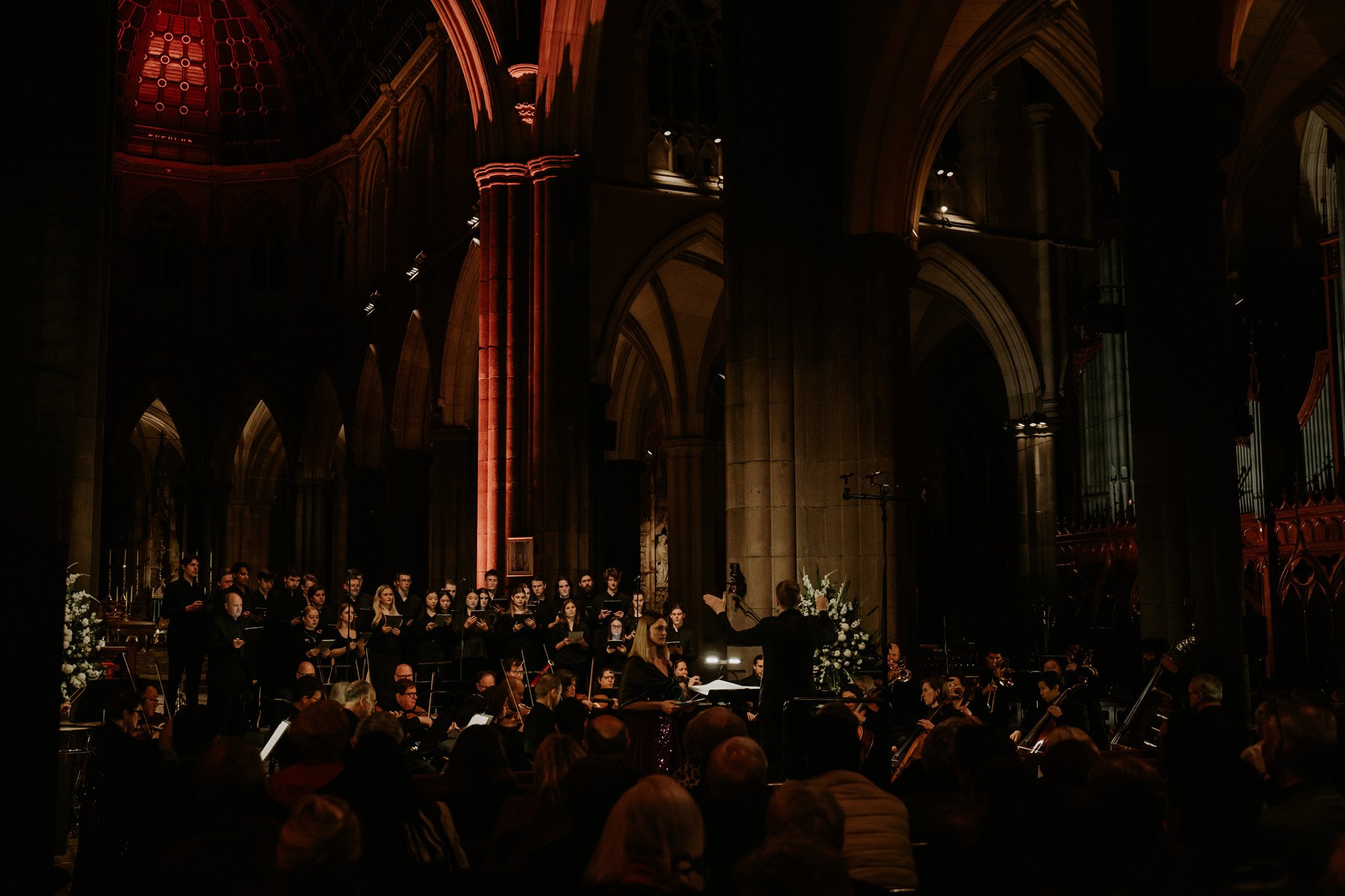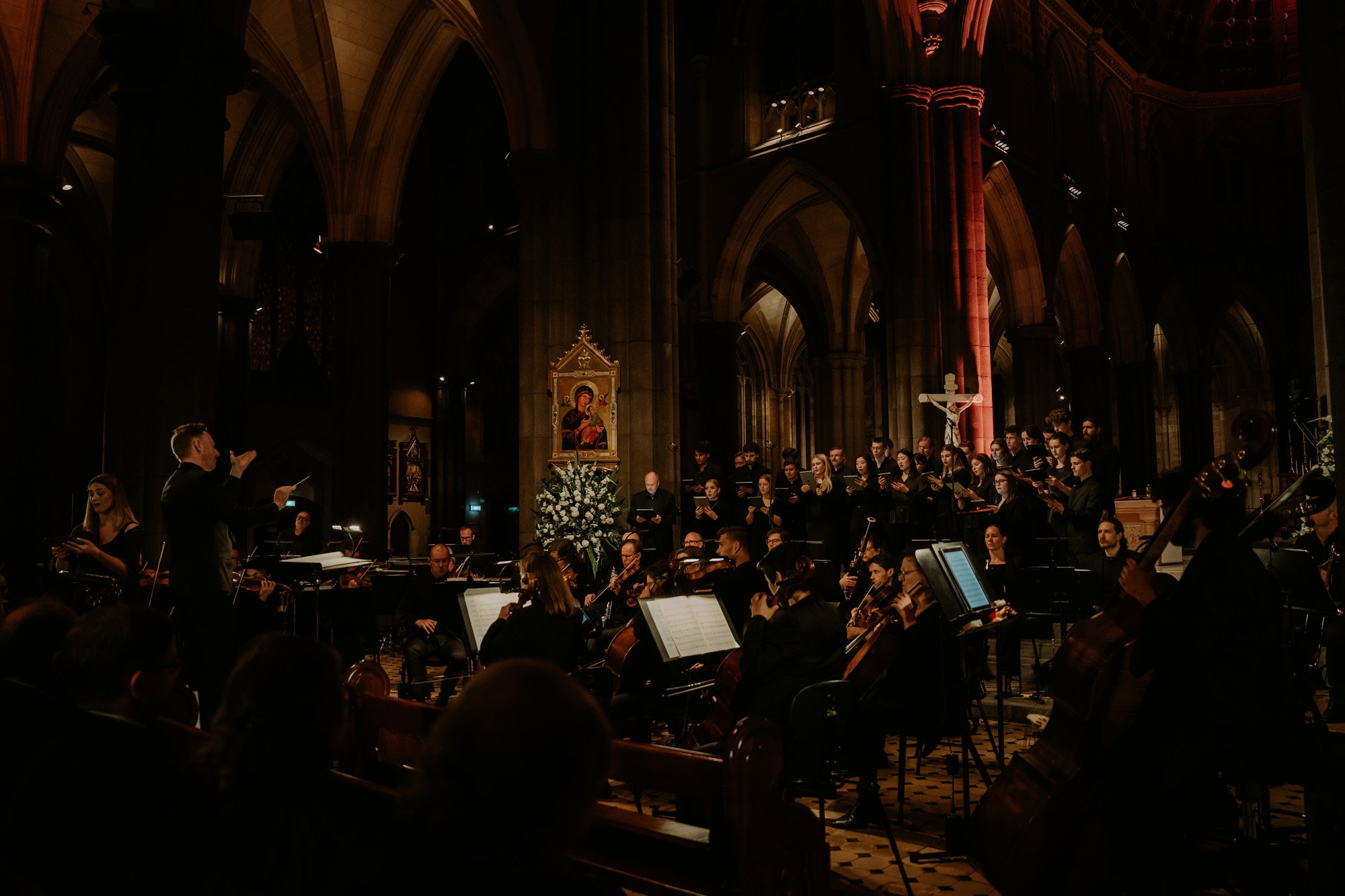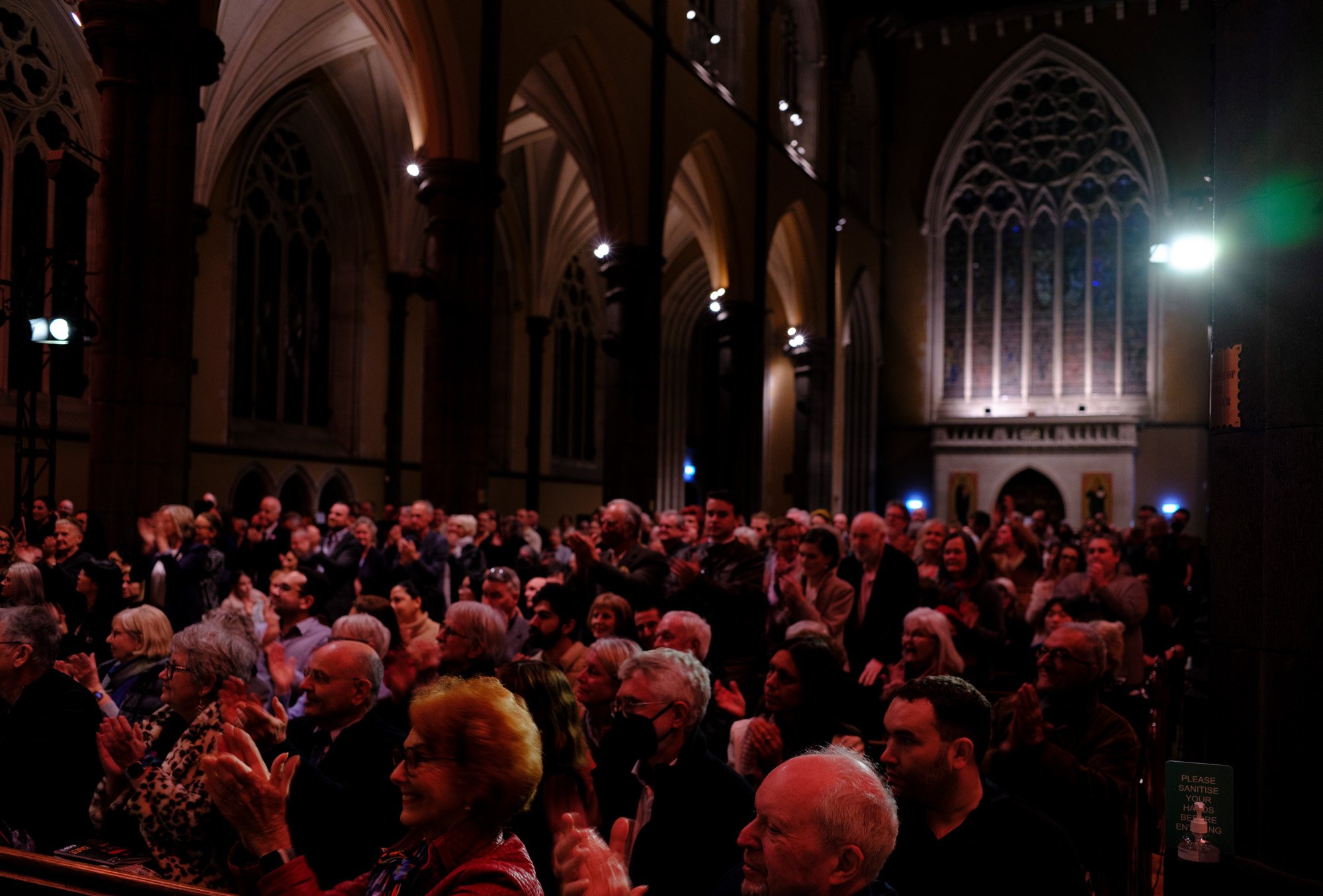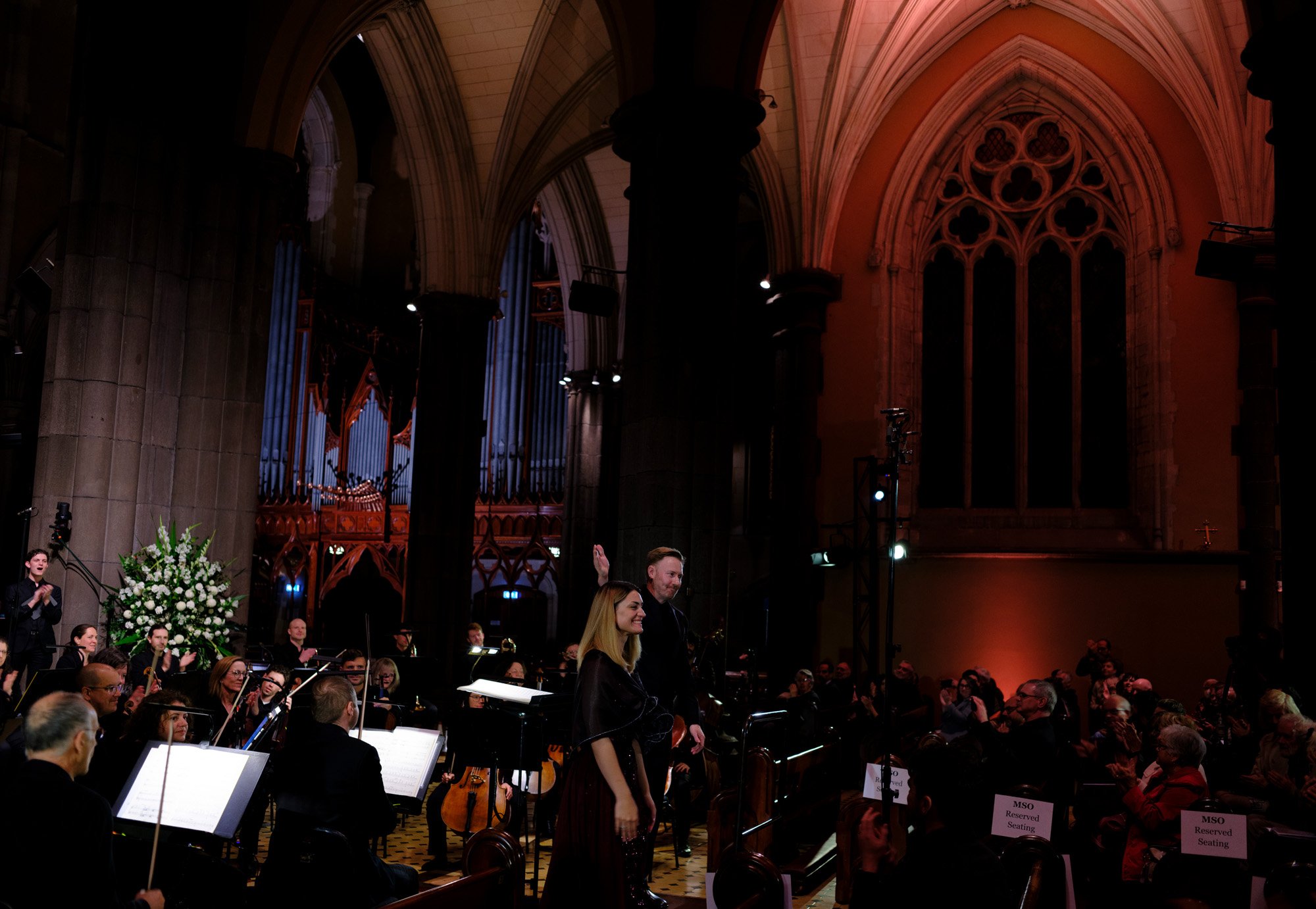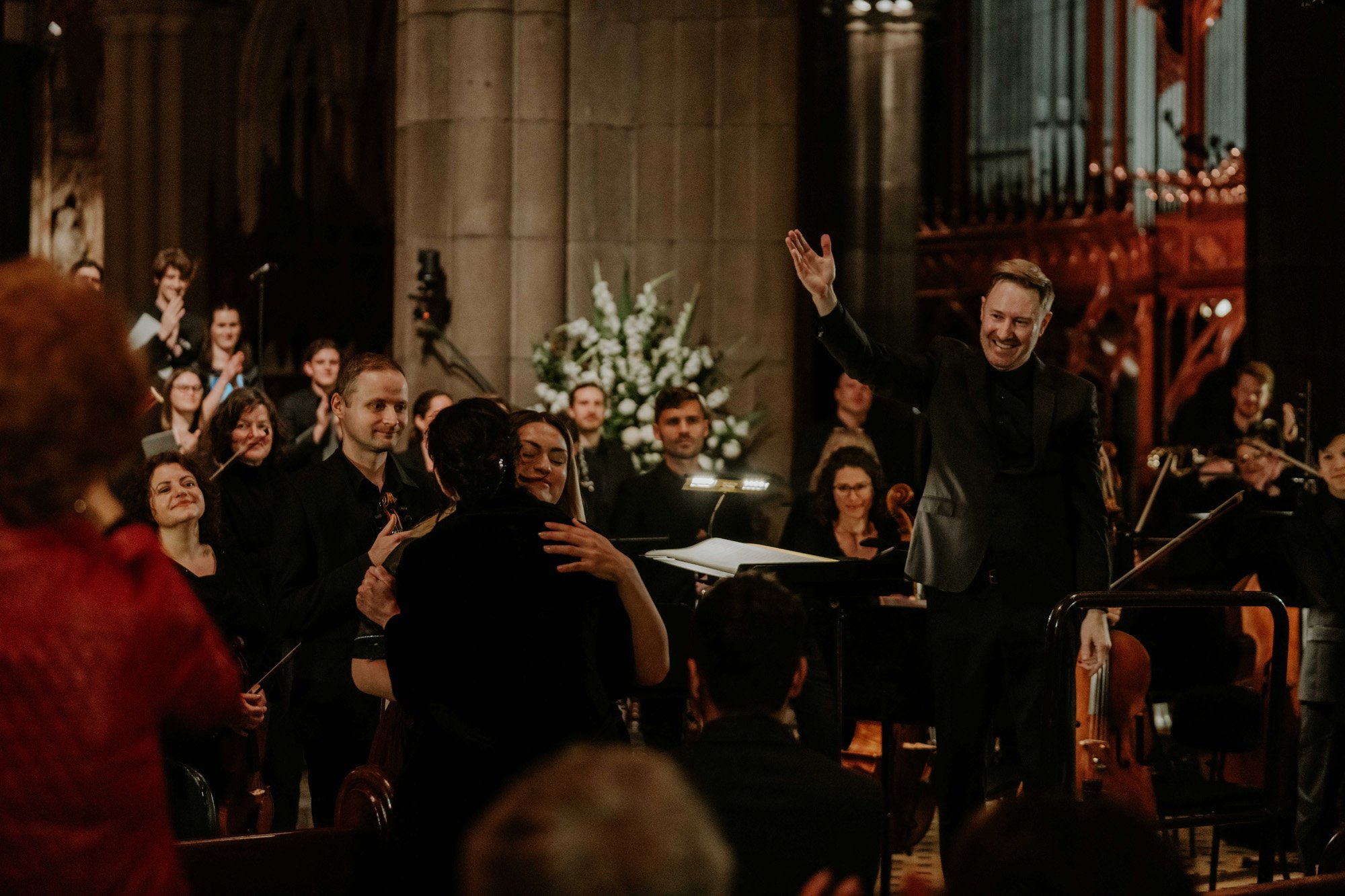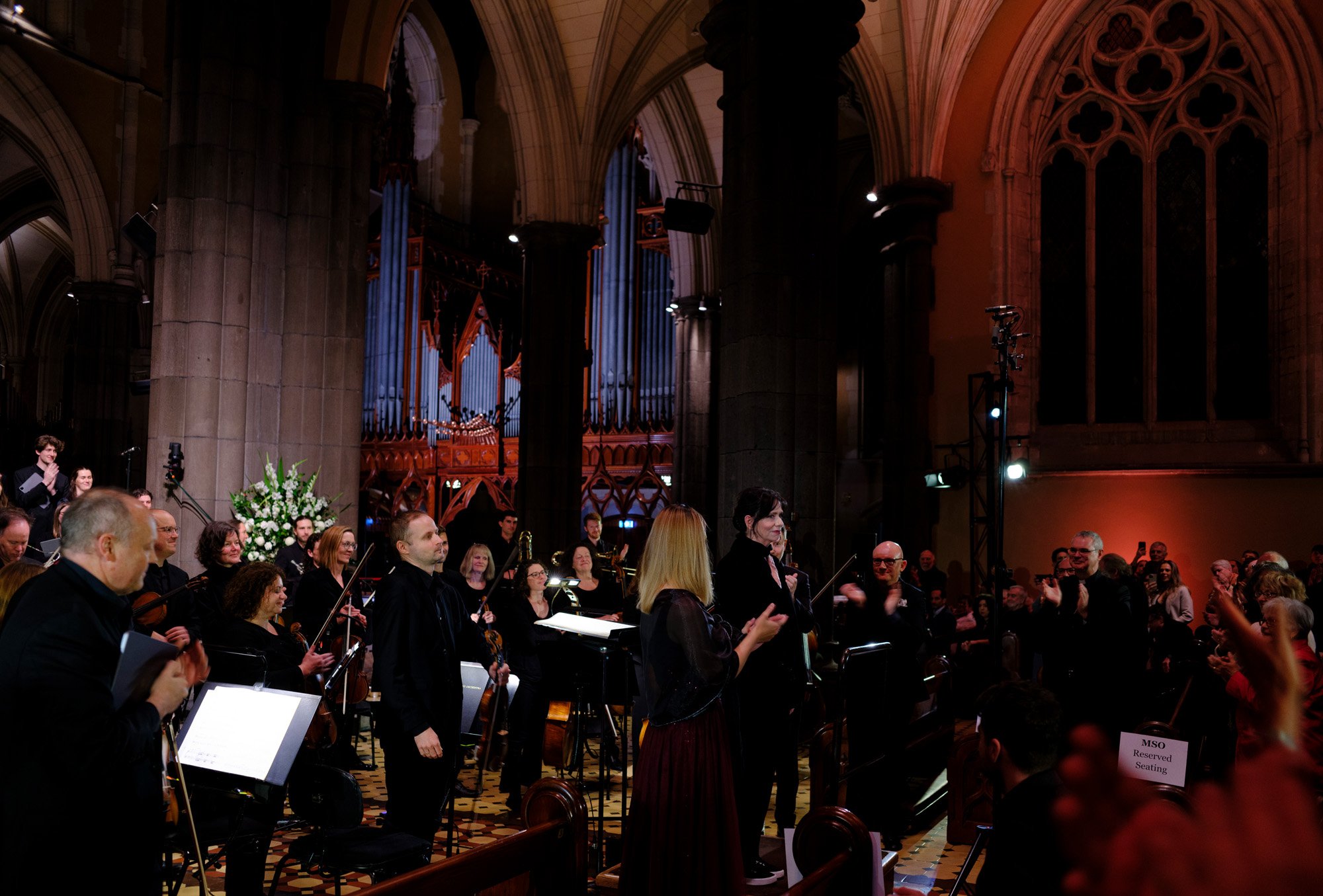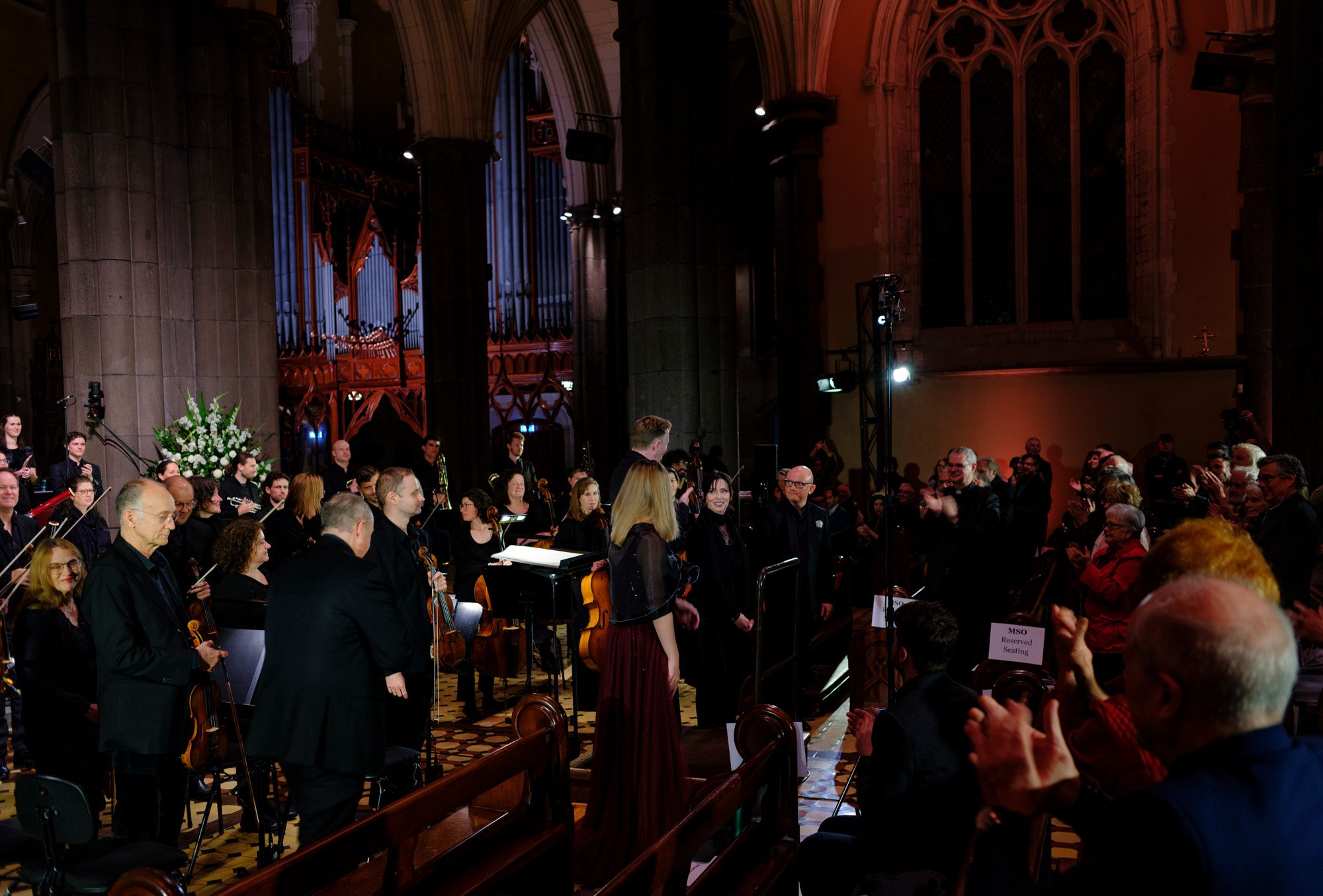STABAT MATER
~ oratorio ~
“‘an extraordinary work...’
⭐️⭐️⭐️⭐⭐
”
Stabat Mater Wins Two 2024 Art Music Awards from APRA AMCOS
VIDEO RECORDING
Video: Dean Golja (Image United)
Ad Honorem Beatæ Mariæ Virginis | Stabat Mater
for solo soprano, organ, choir & orchestra with pre-recorded narration by Mel Gibson
~ Dedicated to Our Lady and her maternal grace that enfolds the world — especially the innocent ~
Commissioned by the Melbourne Symphony Orchestra with generous support from Kim Williams AM
GALLERY
Images: Dean Golja
CREDITS
PREMIÈRE PERFORMANCE
27 September 2023, Melbourne VIC (AUS)
ST. PATRICK’S CATHEDRAL
Mel Gibson, pre-recorded narration
Mia Robinson, soprano
Joseph Nolan, organ
Choir of Trinity College Melbourne. Directed by Christopher Watson
Melbourne Symphony Orchestra
Conductor: Benjamin Northey
IN GRATITUDE
Pre-recorded narration: recorded mixed and mastered by Buck Sanders at Pianella Studios, Malibu, USA
Special thanks also to Marco Beltrami, Wil Anton Golja, Mitchell Moldenhauer and John Nolan
Father Brendan Arthur for sharing specialised knowledge of Latin text and Anna Fraser for Latin chant
PERFORMANCE RECORDING & PHOTOGRAPHY
Audio: recorded, mixed and mastered by Alistair McClean
Video: recorded, edited and mastered by Dean Golja (IU) and Felix Schofield
Photography: Dean Golja (IU) & Laura Wilson
STABAT MATER
~ A CURATED CONCERT PROGRAMME ~
Programme Notes FOR
STABAT MATER
~ ORATORIO ~
AD HONOREM BEATÆ MARIÆ VIRGINIS
Ad Honorem Beatæ Mariæ Virginis emerges as a tribute to the Blessed Virgin Mary, a sacred overture preceding my composition, Stabat Mater. Here, at the foot of the cross, the Blessed Virgin Mary stood as a sentinel of love, her heart a mosaic of anguish and devotion. In a gesture of divine significance, Jesus cast His gaze upon His mother and the beloved disciple John, entrusting their souls to one another's care. “Woman, behold, your son.” “Behold, your mother.” With these words, the boundaries of motherhood expanded beyond flesh and blood, encompassing the entirety of humanity in a tender embrace.
Ad Honorem Beatæ Mariæ Virginis is in honour of this pivotal moment that resounds through the ages, an invitation to all hearts to seek solace and guidance in Mary as our heavenly mother. It is a musical offering that encapsulates this timeless truth. Through narrated and sung text, the work weaves three revered prayers of the Ave Maria, Sub Tuum Praesidium and Salve Regina in honour of Our Lady with Psalm 82: 3-4, evoking a plea for Our Lady's maternal grace to protect under her mantel the children of the world—especially those who have been lost, were left forsaken, taken or whose existence was tragically quenched by the agency of another. In this fusion, the music becomes a prayer and a supplication—a tribute to the universal motherhood that blossomed beneath the cross, transcending grief to bestow grace upon all who turn their eyes toward her.
Ad Honorem Beatæ Mariæ Virginis is a testament to honour the eternal essence of Mary's compassion and devotion, and sets the stage for the poignant journey that awaits in Stabat Mater.
STABAT MATER
The Stabat Mater, a timeless prayer with origins in medieval Christianity, stands as a testament to the Blessed Virgin Mary's unwavering devotion at the foot of the Cross. This prayer, invoking the image of the grieving mother beside her crucified Son, has transcended time, stirring hearts with its pathos and spiritual depth. Evoking empathy for Mary's sorrow and the shared human experience of suffering, the Stabat Mater has become a universal hymn of solace and compassion.
The legacy of the Stabat Mater extends beyond prayer into the realm of music, where it has ignited the creative fervour of countless composers through the ages. From medieval plainchant to intricate choral compositions and operatic settings, the Stabat Mater has inspired a myriad of musical interpretations. Each work, bearing the emotional resonance of the prayer, becomes a rich tapestry woven with melodies and harmonies that mirror the intertwining of suffering and hope.
In the hands of composers including Palestrina, Pergolesi, Rossini, Dvořák, Poulenc and beyond, the Stabat Mater has undergone a metamorphosis, adapting to the musical languages of their respective eras. These compositions, contrasting in style yet unified in their reverence, elevate the prayer's themes of maternal love, sacrifice and divine grace. Through the medium of music, the Stabat Mater continues to resonate, enveloping audiences in its sacred embrace and inviting them to contemplate the profound mystery of Mary's devotion, the profound sorrow of the Cross, and the eternal promise of redemption.
In my own interpretation, the composition takes on a tripartite structure. The first movement unfurls the narrative encompassing the initial eight verses of the Stabat Mater, leading us through the trials of the Blessed Virgin Mary at the foot of the cross. Interspersed between the sections are introductory phrases of the ninth verse emerging like delicate fragments to serve as a contemplative bridge between the first and second movements.
In musical parlance, this opening movement features a recurrent motif, a guiding thread that carries each of the verses, weaving an intricate pathway that escorts the listener through a transformative layering of musical textures while upholding thematic unity. Akin to the beads of the Rosary as they pass through prayerful hands, this movement unveils the motif's dynamic metamorphoses, each iteration imbued with profound intent.
The second movement centres upon the ninth and tenth verses, constituting a notable departure from its preceding counterpart by forming a direct entreaty to Our Lady: “O Mother, fountain of love, make me feel the power of sorrow, that I may grieve with you. Grant that my heart may burn in the love of Christ my Lord, that I may greatly please Him.”
Comprising two distinct sections, this movement commences with a trio of verses inspired by early baroque madrigal art and intoned by a solo soprano while harmonised by both choral voices and instrumental accompaniment. The ensuing section showcases a contrapuntal texture of choral composition, evoking the essence of Renaissance-style motet crafting.
The third movement resonates in stark contrast to its predecessor, embarking upon an evocative journey with a solo soprano's sombre overture that sets a tone of darkness. This opening act is subsequently joined by a chorus emitting poignant sighs, a vivid articulation of grief and affliction. From the outset and as the movement progresses, verses eleven to nineteen evoke the Holy Mother in both her own anguish and that borne by her Son. Ultimately, the movement reaches its zenith through a reprise of the earlier thematic strains from the first movement where the final verse “When my body dies, grant that to my soul is given the glory of paradise” is enunciated, followed by the revival of the canon that once graced the overture to the Stabat Mater, Ad Honorem Beatæ Mariæ Virginis.
AD HONOREM BEATÆ MARIÆ VIRGINIS
LATIN TEXT (with English translations)
AVE MARIA
Latin:
Ave Maria, gratia plena,
Dominus tecum.
Benedicta tu in mulieribus,
et benedictus fructus ventris tui,
Iesus.
Sancta Maria, Mater Dei,
ora pro nobis peccatoribus,
nunc et in hora mortis nostræ.
Amen.
English:
Hail Mary, full of grace,
the Lord is with thee.
Blessed art thou amongst women,
and blessed is the fruit of thy womb,
Jesus.
Holy Mary, Mother of God,
pray for us sinners,
now and at the hour of our death.
Amen.
SUB TUUM PRÆSIDIUM
Latin:
Sub tuum præsidium confugimus,
Sancta Dei Genetrix.
Nostras deprecationes ne despicias in necessitatibus,
sed a periculis cunctis libera nos semper,
Virgo gloriosa et benedicta.
English:
We fly to thy protection,
O holy Mother of God.
Despise not our petitions in our necessities,
but deliver us always from all dangers,
O glorious and blessed Virgin.
SALVE REGINA
Latin:
Salve, Regina, mater misericordiae;
vita, dulcedo et spes nostra, salve.
Ad te clamamus exsules filii Hevae.
Ad te suspiramus gementes et flentes
in hac lacrimarum valle.
Eia ergo, advocata nostra,
illos tuos misericordes oculos ad nos converte.
Et Iesum, benedictum fructum ventris tui,
nobis post hoc exsilium ostende.
O clemens, o pia, o dulcis Virgo Maria.
English:
Hail, Holy Queen, Mother of Mercy, hail, our life,
our sweetness and our hope.
To thee do we cry, poor banished children of Eve,
to thee do we send up our sighs,
mourning and weeping in this vale of tears.
Turn, then, most gracious Advocate,
thine eyes of mercy toward us,
and after this our exile,
show unto us the blessed fruit of thy womb.
O clement, O loving, O sweet virgin Mary.
PSALM 82: 3-4
Latin:
Iudicate egeno et pupillo; humilem et pauperem justificate.
Eripite pauperem, et egenum de manu peccatoris liberate.
English:
Judge for the needy and fatherless: do justice to the humble and the poor.
Rescue the poor; and deliver the needy out of the hand of the sinner.
STABAT MATER: TRANSLATION
1. Stabat Mater dolorosa iuxta crucem lacrimosa dum pendebat Filius
The grieving Mother stood weeping beside the cross where her Son was hanging
2. Cuius animam gementem contristatam et dolentem pertransivit gladius
Through her weeping soul, compassionate and grieving, a sword passed.
3. O quam tristis et afflicta fuit illa benedicta Mater Unigeniti
O how sad and afflicted was that blessed Mother of the Only-begotten!
4. Quae moerebat et dolebat Pia Mater dum videbat nati poenas incliti
Who mourned and grieved, the pious Mother, looking at the torment of her glorious Child
5. Quis est homo qui non fleret Matri Christi si videret in tanto supplicio?
Who is the person who would not weep seeing the Mother of Christ in such agony?
6. Quis non posset contristari Matrem Christi contemplari dolentum cum filio?
Who would not be able to feel compassion on beholding Christ’s Mother suffering with her Son?
7. Pro peccatis suae gentis vidit Iesum in tormentis et flagellis subditum
For the sins of his people she saw Jesus in torment and subjected to the scourge.
8. Vidit suum dulcem natum moriendo desolatum dum emisit spiritum
She saw her sweet offspring dying, forsaken, while He gave up his spirit
9. Eia Mater, fons amoris, me sentire vim doloris fac ut tecum lugeam
O Mother, fountain of love, make me feel the power of sorrow, that I may grieve with you
10. Fac ut ardeat cor meum in amando Christum Deum ut sibi complaceam
Grant that my heart may burn in the love of Christ my Lord, that I may greatly please Him
11. Sancta Mater, istud agas, crucifixi fige plagas cordi meo valide
Holy Mother, grant that the wounds of the Crucified drive deep into my heart.
12. Tui nati vulnerati tam dignati pro me pati poenas mecum divide
That of your wounded Son, who so deigned to suffer for me, I may share the pain
13. Fac me tecum pie flere crucifixo condolere donec ego vixer
Let me sincerely weep with you, bemoan the Crucified, for as long as I live
14. Iuxta crucem tecum stare et me tibi sociare in planctu desidero
To stand beside the cross with you, and gladly share the weeping, this I desire
15. Virgo virginum praeclara mihi iam non sis amara fac me tecum plangere
Chosen Virgin of virgins, be not bitter with me, let me weep with thee
16. Fac ut portem Christi mortem passionis fac consortem et plagas recolere
Grant that I may bear the death of Christ, the fate of his Passion, and commemorate His wounds
17. Fac me plagis vulnerari fac me cruce inebriari et cruore filii
Let me be wounded with his wounds, inebriated by the cross because of love for the Son
18. Flammis ne urar succensus, per te, Virgo, sim defensus in die iudicii
Inflame and set on fire, may I be defended by you, Virgin, on the day of judgement
19. Christe cum sit hinc (iam) exire da per matrem me venire ad palmam vicoriae
Let me be guarded by the cross, armed by Christ’s death and His grace cherish me
20. Quando corpus morietur fac ut animae donetur paradisi gloria. Amen
When my body dies, grant that to my soul is given the glory of paradise. Amen
